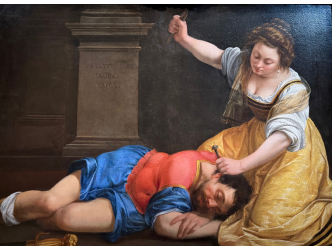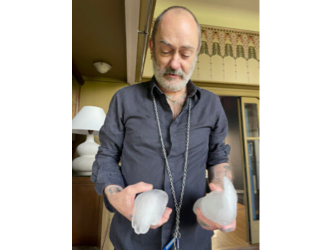17 billion dollars in 2021 at auction
Through hell and high water the world still has faith in art, or at least in the art market. The global public health crisis was not yet over when 17 billion dollars’ worth of artworks changed hands at auction in 2021, making that 28% up from 2018, according to the Artprice database.
Surrealist zeitgeist
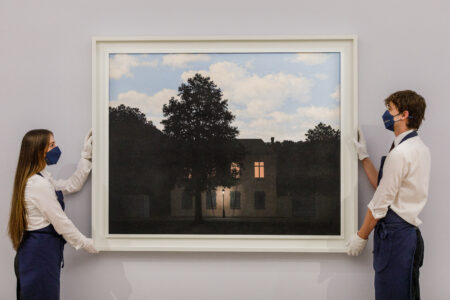
René Magritte
On 24 February Russia invaded Ukraine but a few days later the first big prices of 2022 captured the zeitgeist in their own way. In many of its aspects, it is surrealist. The most commercial master of this genre, who captures scenes of great strangeness through his flat painting style, is Belgian artist René Magritte (1898-1967).
L’Empire des Lumières
On 2 March 2022 one of his paintings which has now gone down in collective memory, “L’empire des lumières”, an urban landscape which merges a nocturnal and diurnal atmosphere, was sold by Sotheby’s for 71.5 million euros. “Being of an exceptional size it could have gone up to 100 million dollars if the context of uncertainty hadn’t been so strong and the Russian clientele had been present,” estimates Charly Herscovici, president of the Magritte foundation.
Hong Kong buyer?
He explains that there are no less than 14 painted versions of “L’empire des lumières”. “It is the painting that Magritte repeated the most,” he explains, while highlighting that this rendition from 1961 was the largest ever made and until now it had remained in the same Belgian family, the Gillion-Crowets. There is talk of a Hong Kong buyer for this trophy painting.
Paradoxically, the multiplication of versions (ten have gone to auction since the 1980s) increases the desire of collectors (see here the report on the market for the “L’empire des lumières” paintings).
A true sale for the connoisseurs

Christian Marclay
But the art market of 2022 is not only made up of record prices and what we would call “iconic” works.
It is the same auction house, Sotheby’s, which is presenting on 6 April in Paris, with a catalogue that is solely online, a true sale for the connoisseurs: the dispersal of the collection belonging to the French former dealer Loïc Malle. He saw himself as a “market maverick”, had a gallery in Paris on the Avenue Montaigne in the early 90s, and today advises two collectors whilst overseeing the interests of the artist from American Land Art, Charles Ross (born in 1937).
Conceptual in nature
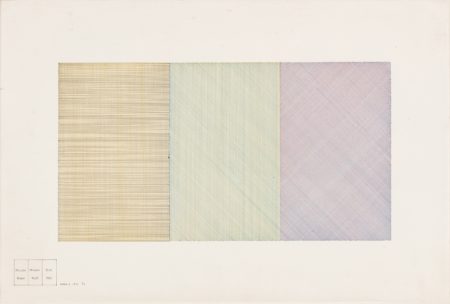
Sol LeWitt
Loïc Malle is parting with almost the entirety of his collection. “I’m clearing the decks,” he jokes. However he is keeping his 16th-century drawings and a tribal art ensemble. What is going to auction is highly conceptual in nature, which he justifies by saying: “I like ruptures in art.” The Sotheby’s expert Christophe Mallécot estimates that the ensemble of 109 lots has a value of around 1.5 million euros: “We don’t usually see such a comprehensive ensemble of minimal and conceptual art in France”.
Natural materials
But the market at auction in the United States doesn’t truly value the masters of Land Art either. The movement which emerged in the late 1960s has now gone down in the history of art. The likes of Michael Heizer, Robert Smithson and Walter de Maria played in remote places with natural materials to create artworks on a large scale which seem to draw on forgotten civilizations.
Their work is often associated with environmental consciousness, which may resonate more favourably today, with nature itself serving as the art material.
Virginia Dwan

Virginia Dwan
Loïc Malle often refers on this matter to Virginia Dwan, a pioneering American gallerist who has had an exhibition at Lacma in Los Angeles and at the National Gallery in Washington in 2016 and 2017. The Frick Collection in New York summed up her quasi-utopian work at one of their conferences: “Virginia Dwann: Selling the ‘Uncollectible’”.
Spiral Jetty

Robert Smithson
It is through her work for example that Loïc Malle acquired a single print from 1970 in large format of the most famous work by Robert Smithson (1938-1973): “Spiral Jetty” (estimate: 60,000 euros). It features a spiral made up of 6000 tonnes of earth and stones installed at the Great Salt Lake in Utah. A 16mm contemporary film also illustrates the subject (estimate: 4000 euros).
Walter de Maria
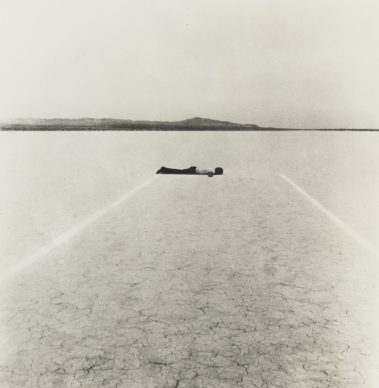
Walter De Maria
From the same provenance, the catalogue contains another single photo by another giant of American Land Art, Walter de Maria (1935-2013). The artist who was passionate about the idea of space and infinity is photographed in 1968 in the Nevada desert, lying between two parallel lines drawn on the ground. A metaphysical reflection of the smallness of man…
Lionel Bovier
Next October the museum of contemporary art in Geneva, Mamco, will be staging an exhibition on Land Art which is due to feature these two images. Lionel Bovier, director of the institution, reveals that “Robert Smithson was thinking about the problem of the exhibition in a closed space through his concept of the site and non-site. Documentation such as photos plays, in this spirit, a key role.”
Yves Klein
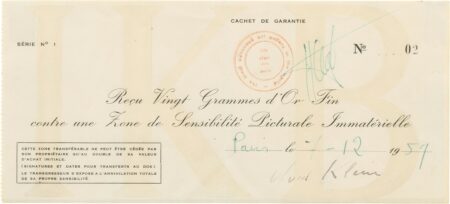
Yves Klein
Virginia Dwan has also exhibited Yves Klein in the United States. The sale contains three works by him, including the sale’s flagship lot. (See here the last report about Yves Klein). This is a purely conceptual object entitled “Zone de Sensibilité Picturale Immatérielle” (Zone of immaterial pictorial sensibility).
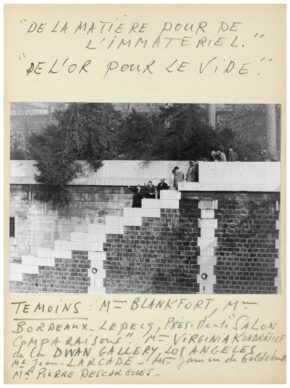
NFT before NFT
For Loïc Malle this is clearly a foreshadowing of what would come to be the NFT (non-fungible token) (See here and here reports about NFT). The artist wrote a sort of cheque for the ownership of an empty space, which is then given, in the presence of witnesses (as it happens including Virginia Dwann) to a person in exchange for a certain quantity of gold.
In cryptocurrency
This “magical” paper, which shows the extent of the power of the artist, is estimated at 300,000 euros. According to the Klein archives, never before has one of these documents gone to auction. Incidentally Sotheby’s is proposing to acquire this piece in cryptocurrency.
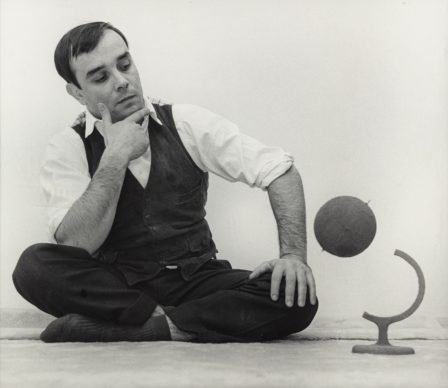
Yves Klein
Le saut dans le vide
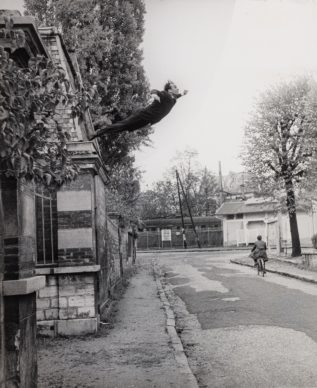
Yves Klein
The most famous photo of Yves Klein is “Le saut dans le vide”. It’s a photomontage of the artist leaping into the air, taken in 1960 by his official photographer Harry Shunk (1924-2006). A single print from 1990 in large format of this famous image, which shows evidence of it having been doctored, is presented with an estimate of 50,000 euros.
Rashid Johnson
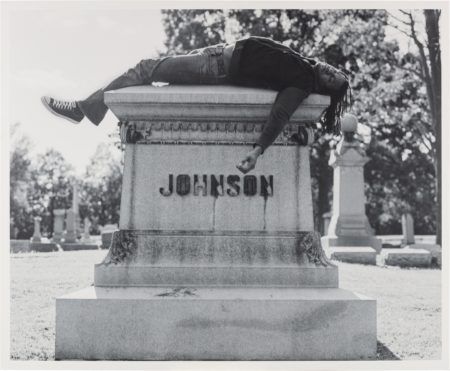
Rashid Johnson
Lastly, avid fans of highly contemporary art will notice Loïc Malle’s pioneering eye.
Very early on he was collecting works by one of the current stars of the market, Rashid Johnson (born in 1977). Today he is represented by the powerful multinational gallery Hauser & Wirth, and one of his abstract paintings was auctioned in November 2021 for the record price of 2.1 million euros. In the Paris sale on 6 April the artist who often speaks about the status of black Americans created his photo self-portrait in 2006, lying on the grave of Jack Johnson, the first black American boxing champion (estimate: 12,000 euros).

Rashid Johnson
Olivier Babin before Clearing
The final lot in the catalogue of the Loïc Malle collection is a conceptual work from 2007. Across a red monochrome canvas is written the words: “Only Time Will Tell”. The painting, estimated at 1000 euros, was made by Olivier Babin (born in 1975). A French national who very quickly abandoned his career as an artist to move to the other side, the art trade. Today he runs the high-profile Clearing gallery in New York, Brussels and Beverly Hills. In his case, time has given its verdict (see here an interview of Olivier Babin).
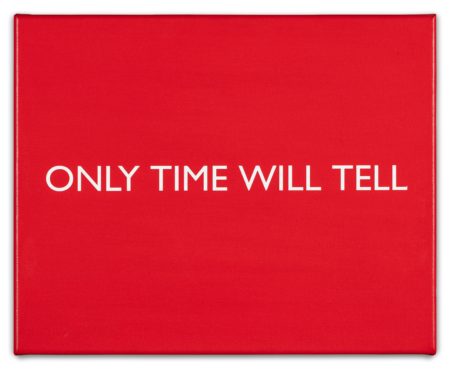
Olivier Babin
https://www.sothebys.com/en/buy/auction/2022/collection-loic-malle-only-time-will-tell-2
Support independent news on art.
Your contribution : Make a monthly commitment to support JB Reports or a one off contribution as and when you feel like it. Choose the option that suits you best.
Need to cancel a recurring donation? Please go here.
The donation is considered to be a subscription for a fee set by the donor and for a duration also set by the donor.

